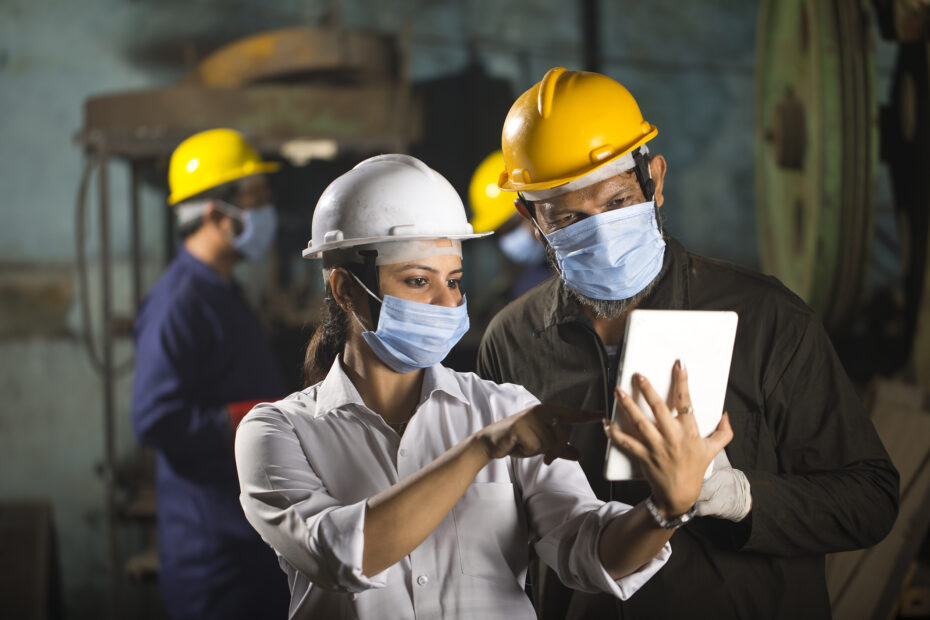Connected Worker Safety: Improving Safety And Compliance In Manufacturing

According to the US Bureau of Labor Statistics, the manufacturing industry reports over 300 work-related fatalities among full-time workers every year. In fact, despite the improvement in worker safety standards, the number of fatalities has increased from 303 in 2017 to 341 in 2020! UK-based Health and Safety Executive reported that manufacturing accounts for 10% of workforce fatalities in the country, while 1 in 5 employees report non-fatal injuries. Connected Worker Safety has become a focal point in the manufacturing industry as most of these injuries and fatalities are caused by preventable machine-related incidents and human error.
An efficient machine maintenance strategy can have a direct bearing on reducing these incidents and improving overall field safety. A low code/ no code Connected Worker Platform digitizes safety training, standardizes job execution and provides remote assistance when the unforeseen occurs and it works through the devices front line teams use naturally in the flow of work (mobile, laptops, tablets and Smart Glasses).
Can a Connected Worker Platform improve manufacturing safety and compliance? The answer is a resounding yes! Let’s see how.
How Connected Worker Platforms Improve Safety and Compliance in ManufacturingLet’s look at the 7 ways in which Connected or Front Line Worker Platform can improve Front Line Worker Safety in the manufacturing domain:
- Improving safety training
To ensure front line safety, connected workers must undergo complete safety training program before they go to the manufacturing facility. A continuous training program delivered through Connected Worker platforms can significantly reduce workplace incidents and offers contextually rich, simple to understand visual instruction to improve training speed and quality. Due to the time stamps for each process manufacturers can be sure that their front line workers have actually done the training before reaching the production floor in contrast to paper based safety training methods where no proof is possible.
- Enabling immediate reporting of “near-miss” incidents
Manual or paper-based processes are inefficient at recording "near-miss" incidents at any manufacturing facility. This is why most manufacturing companies relay the information verbally. Verbal communications unfortunately rarely lead to an investigation into such incidents.
A Connected Worker or Front Line Worker platform provides real-time visibility into front line operations, capturing real-time data about near-miss incidents and escalating it rapidly to management in real time. Further, keyword-supported Smart alerts can instantly appraise the floor-level supervisor of the incident with specific information they need to come up with a solution.
- Recording and resolving workplace hazards
As manufacturers need to be in regulatory compliance with EHS or HSE guidelines, they must record and report workplace hazards or problems. With Connected Worker platforms, they can instantly provide higher management with hazard reports. Using mobile devices, front line workers can include photographic or video-based evidence to visually highlight these issues to management, which can then be communicated to the entire front line team using instant messaging or platform-based announcements.
- Improving worker safety with intuitive work instructions
Digital and visually intuitive work instructions allow even inexperienced workers to perform their daily work with minimum risk. Workplace safety compliance procedures can be easily integrated with these work instructions.5. Eliminating any standard deviationsMajor deviations from safety standards are known to cause machine breakdowns and worker injuries. Efficient procedures can track these deviations and standardize maintenance jobs, thus, avoiding regular breakdowns and related worker injury.
- Storing safety and compliance data
As compared to paper-based processes, Connected Worker platforms can be used to store and access safety and compliance data digitally. With timestamps, safety records also include photographic evidence of completed service tasks. Not only do you have proof the safety procedures have actually been utilized you have standardized processes from tested best practices to make sure they have been done right.
- Enabling Text-to-Speech functions
With more machine maintenance tasks requiring “hands-free” operation and complete concentration, Front Line worker platforms such as the Atheer platform offers Text-to-Speech functionality that can read out instructions to front line operators. This gives them great autonomy to work safely and independently.
ConclusionIn the age of Industry 4.0, Connected Worker Safety is a crucial part of manufacturing safety practices. Connected Worker platforms can improve worker safety by elevating maintenance work and reducing machine breakdowns, which is the single biggest factor for safety-related practices in manufacturing facilities.
The low code/no code Atheer Front Line Worker Platform has been instrumental in empowering connected workers and helping them perform preventive maintenance work safely.With the Atheer platform, manufacturers now have real-time access to machine data which enables informed decisions to improve workplace safety. With improved training, work execution and instant access to subject matter experts Connected Worker Platforms improve safety for your front line teams.
To know how Atheer can help keep your front line teams safe and productive, book a free demo with us today.
Simplify your service network operations
Discover how Atheer can streamline your service network operations and help you deliver a superior customer experience
Request a demo






















